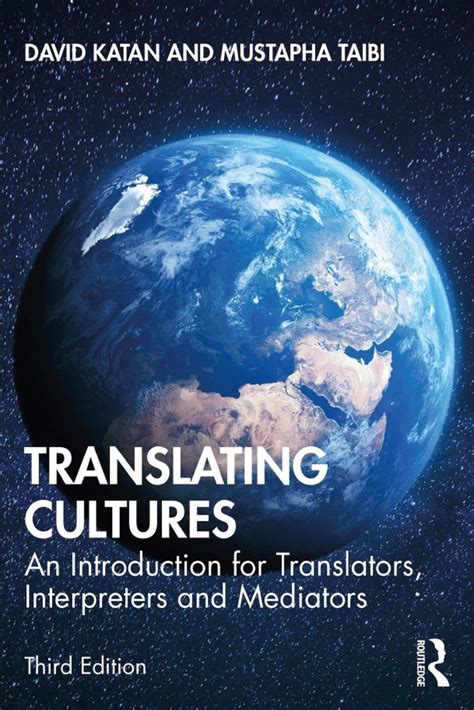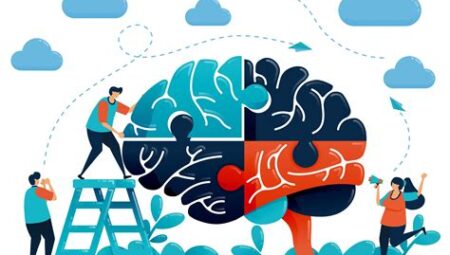In a world that is more interconnected than ever before, the role of translation and interpretation is becoming increasingly vital. From diplomacy and business to literature and entertainment, the ability to bridge the gap between languages and cultures has a profound impact on our global society. In this blog post, we will explore the multifaceted field of translation and interpretation, delving into the importance of these services, the cultural context that underpins them, and the evolving role of technology in shaping the future of the industry. We will also examine the intricacies of translating idioms, expressions, and humor across different cultural landscapes, as well as the ethical considerations that come into play. Whether you’re a language enthusiast, a professional translator, or simply curious about the world of linguistics, join us as we delve into the fascinating world of translating cultures.
Table of Contents
The Importance of Translation and Interpretation
Translation and interpretation play a critical role in bridging the gap between different languages and cultures. In today’s increasingly globalized world, the need for accurate and effective translation and interpretation services has never been more important. Whether it’s in business, diplomacy, healthcare, or the legal system, the ability to communicate across languages is essential for successful interactions and outcomes.
Moreover, translation and interpretation are key to preserving and promoting cultural heritage. They allow for the sharing of literature, art, and ideas across linguistic boundaries, ensuring that important works and traditions are not lost or misunderstood. By facilitating the exchange of knowledge and information, translation and interpretation contribute to the enrichment of diverse cultures and societies.
Furthermore, translation and interpretation play a crucial role in fostering understanding and empathy among people from different linguistic and cultural backgrounds. By accurately conveying the nuances of language and thought, translators and interpreters help individuals connect on a deeper level, breaking down barriers and fostering mutual respect.
Overall, the importance of translation and interpretation cannot be overstated. From facilitating cross-cultural communication to preserving cultural heritage and promoting mutual understanding, the work of translators and interpreters is essential for a harmonious and interconnected global community.
Understanding the Cultural Context in Translation
When it comes to translation, understanding the cultural context is essential for conveying the accurate meaning of the source text. This involves not only linguistic knowledge but also a deep understanding of the cultural nuances and references embedded within the text.
Translators must be well-versed in the customs, traditions, and social norms of both the source and target cultures. Without this cultural competence, there is a risk of misinterpretation and miscommunication, which can lead to serious consequences.
Understanding the cultural context in translation also involves recognizing how certain words, phrases, or idiomatic expressions are deeply rooted in the cultural fabric of a society. A literal translation may not capture the intended meaning, so translators must be skilled in adapting the text in a way that resonates with the target audience.
Ultimately, translation is not just about converting words from one language to another; it is about bridging the cultural divide and conveying the true essence of the source text to the target audience.
The Role of Cultural Competence in Interpretation
Interpretation is a complex and challenging task, requiring not only linguistic skills but also a deep understanding of the cultural context in which communication is taking place. Cultural competence plays a crucial role in ensuring accurate and effective interpretation, as it allows the interpreter to accurately convey the meaning and intent behind the words spoken. Without cultural competence, there is a risk of miscommunication, misunderstandings, and potentially damaging consequences.
One of the key aspects of cultural competence in interpretation is the ability to recognize and navigate cultural differences in communication styles, nonverbal cues, and social norms. Interpreters with cultural competence are able to adapt their interpretation strategies to account for these differences, ensuring that the meaning is accurately conveyed across languages and cultures.
Furthermore, cultural competence in interpretation also involves having a deep understanding of the cultural nuances and contextual meanings behind certain language expressions, idioms, and proverbs. This is especially important in situations where literal translation may not accurately capture the intended message, and where a dynamic and culturally sensitive approach is necessary.
In conclusion, the role of cultural competence in interpretation cannot be overstated. It is a vital component in ensuring effective cross-cultural communication and understanding, and it is essential for interpreters to continually develop and hone their cultural competence in order to provide accurate and meaningful interpretation services.
Translating Idioms and Cultural Expressions
Translating idioms and cultural expressions can be a challenging task for translators and interpreters alike. Idioms are phrases that have a figurative meaning that is different from the literal meaning of the words, and often they are deeply rooted in the culture of a particular language. When translating idioms, it is crucial to understand the cultural context in which they are used in order to convey the intended meaning accurately.
One of the main difficulties in translating idioms and cultural expressions is the fact that they may not have direct equivalents in other languages. This can lead to issues of equivalency and accuracy in translation. It requires not only linguistic proficiency, but also a deep understanding of the culture from which the idiom originates. Without this understanding, the translated idiom may lose its original meaning and impact, leading to miscommunication or confusion for the target audience.
Translating idioms also requires a good understanding of the target language and its cultural nuances. It may involve finding a similar idiom in the target language that conveys a similar meaning, or sometimes it may require creating an entirely new expression that captures the essence of the original idiom. This process of adaptation is crucial in order to ensure that the translated idiom resonates with the target audience in the same way that the original idiom does.
In conclusion, translating idioms and cultural expressions is a complex and challenging task that requires not only linguistic proficiency, but also a deep understanding of the cultural context in which the idioms are used. It is essential for translators and interpreters to approach this task with sensitivity and open-mindedness in order to ensure that the original meaning and cultural significance are accurately conveyed.
The Challenge of Translating Humor across Cultures
Translating humor across different cultures can be an incredibly challenging task. Humor is often deeply rooted in cultural references, wordplay, and cultural context, making it difficult to convey the same comedic effect in a different language.
One of the biggest challenges in translating humor is the cultural differences in what is considered funny. What may be hilarious in one culture may not resonate at all in another, leading to the potential for jokes to fall flat or even offend.
Furthermore, humor often relies on linguistic nuances and wordplay, which can be nearly impossible to translate directly. This can make it difficult for translators to capture the essence of the joke without losing its original meaning.
Despite these challenges, skilled translators and interpreters can use their cultural competence and linguistic expertise to bridge the gap and convey humor across cultures, helping to foster understanding and connection.
Exploring the Ethics of Translation and Interpretation
Translation and interpretation are vital tools in bridging linguistic and cultural gaps, allowing for effective communication in a globalized world. However, the ethical considerations surrounding these practices are complex and multifaceted. Translators and interpreters must navigate various ethical dilemmas, such as maintaining accuracy while preserving cultural nuances, respecting client confidentiality, and approaching sensitive topics with professionalism and neutrality.
One of the key ethical considerations in translation and interpretation is maintaining honesty and transparency in the conveyance of information. This involves accurately representing the source text or speech without distorting its meaning, regardless of the translator’s personal opinions or biases.
Privacy and confidentiality are also paramount ethical concerns in the field of translation and interpretation. Professionals in these roles frequently encounter sensitive and confidential information, and must uphold strict codes of confidentiality and non-disclosure to protect the privacy of individuals and organizations.
Beyond the linguistic and cultural aspects, ethical considerations in translation and interpretation also extend to issues of power dynamics, representation, and access to information. It is essential for translators and interpreters to be aware of their own biases and privileges, and to strive for inclusive and equitable language services that empower all parties involved in the communication process.
The Impact of Technology on Translation Services
Technology has revolutionized the translation industry, leading to significant changes in the way that translation services are delivered. The widespread use of translation software has greatly increased the speed and efficiency of translations, allowing for large volumes of text to be translated in a fraction of the time it would take a human translator. This has resulted in a significant increase in productivity for translation agencies and has allowed them to take on more projects at once.
Furthermore, the development of machine translation has created new opportunities for individuals and businesses to access translation services. Companies like Google and Microsoft have developed machine translation tools that provide instant translations of text, making it easier than ever for people to communicate across language barriers. While machine translation is not without its limitations, it has undeniably expanded the reach of translation services and has made them more accessible to a wider audience.
Additionally, technology has facilitated the development of computer-assisted translation (CAT) tools, which help human translators to work more efficiently. These tools provide translators with features like translation memory, terminology databases, and quality assurance checks, which can significantly improve the accuracy and consistency of translations. By enabling translators to leverage these tools, technology has played a crucial role in enhancing the quality of translation services.
Overall, the impact of technology on translation services has been profound, transforming the way that translations are carried out and expanding the reach of translation services. While there are still challenges to be overcome, such as the need for human expertise and the limitations of machine translation, it is clear that technology has had a lasting and significant impact on the translation industry.
Different Approaches to Translation: Literal vs. Dynamic
When it comes to translation, there are two main approaches that translators can take – a literal approach and a dynamic approach. Each approach has its own set of advantages and disadvantages, and the choice between the two often depends on the purpose of the translation and the target audience.
Literal translation, as the name suggests, involves translating a text word-for-word from one language to another. This approach aims to preserve the original structure and wording of the source text as closely as possible. While this can be beneficial for maintaining the integrity and authenticity of the original text, it can also result in awkward or unnatural phrasing in the target language, and may not effectively convey the intended meaning.
On the other hand, dynamic translation prioritizes conveying the meaning and essence of the source text, even if it means deviating from the original wording and structure. This approach allows translators to adapt the text to make it more easily understandable or culturally relevant to the target audience. While dynamic translation may result in a more natural and fluid reading experience, it also runs the risk of introducing unintended changes or interpretations to the original content.
Ultimately, the choice between a literal and dynamic approach to translation depends on the specific requirements of the project, as well as the intended impact on the target audience. Translators must carefully consider the nuances and implications of each approach to ensure that the translated text effectively communicates the intended message while maintaining respect for the source material.
The Role of Interpreters in Diplomatic Relations
Interpreters play a crucial role in facilitating communication between different countries and ensuring that diplomatic relations run smoothly. They are responsible for accurately conveying the words and intentions of one party to another, allowing for productive dialogue and negotiation to take place.
Interpreters must possess cultural competence in order to accurately interpret the nuances and subtleties of language within the context of diplomatic relations. This requires not only a deep understanding of the languages involved, but also an extensive knowledge of the cultural, political, and historical factors that may impact the communication process.
Furthermore, the role of interpreters in diplomatic relations goes beyond mere language translation. They often serve as cultural mediators, helping to bridge the gap between different worldviews and perspectives. Their ability to navigate complex political and diplomatic environments is essential for maintaining trust and fostering positive international relationships.
In today’s globalized world, the demand for skilled interpreters in diplomatic settings continues to grow. As such, the future of interpreters in diplomatic relations will likely see an increased emphasis on technology, as well as a greater need for intercultural communication and negotiation skills.
The Future of Translation and Interpretation: Trends and Innovations
In today’s globalized world, the need for translation and interpretation services is constantly growing. As technology continues to advance, so do the trends and innovations in the field of language services. One of the most prominent trends in the future of translation and interpretation is the integration of artificial intelligence and machine learning. These technologies are revolutionizing the way content is translated, making the process more efficient and accurate.
Another trend that is shaping the future of translation and interpretation is the growing demand for specialized language services. As businesses expand globally, the need for industry-specific translations, such as legal, medical, and technical, is on the rise. This trend has opened up new opportunities for professional translators and interpreters to specialize in niche fields and provide high-quality, specialized language services.
Furthermore, the future of translation and interpretation is also being influenced by the increasing importance of cultural competence in language services. Translators and interpreters are expected to have a deep understanding of the cultural context behind the languages they work with, in order to accurately convey the intended meaning of the source text. This trend emphasizes the need for linguists to not only be proficient in multiple languages, but also be well-versed in the cultural nuances of those languages.
As the field of translation and interpretation continues to evolve, it is evident that the future will be shaped by innovative technologies, specialized language services, and a heightened emphasis on cultural competence. These trends are not only transforming the way language services are provided, but also opening up new opportunities for language professionals to meet the growing demands of a globalized world.






